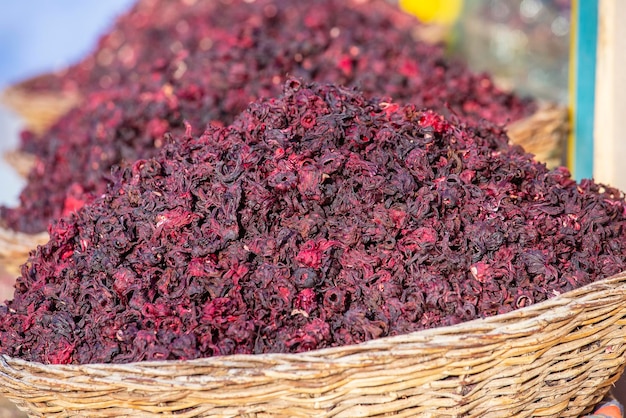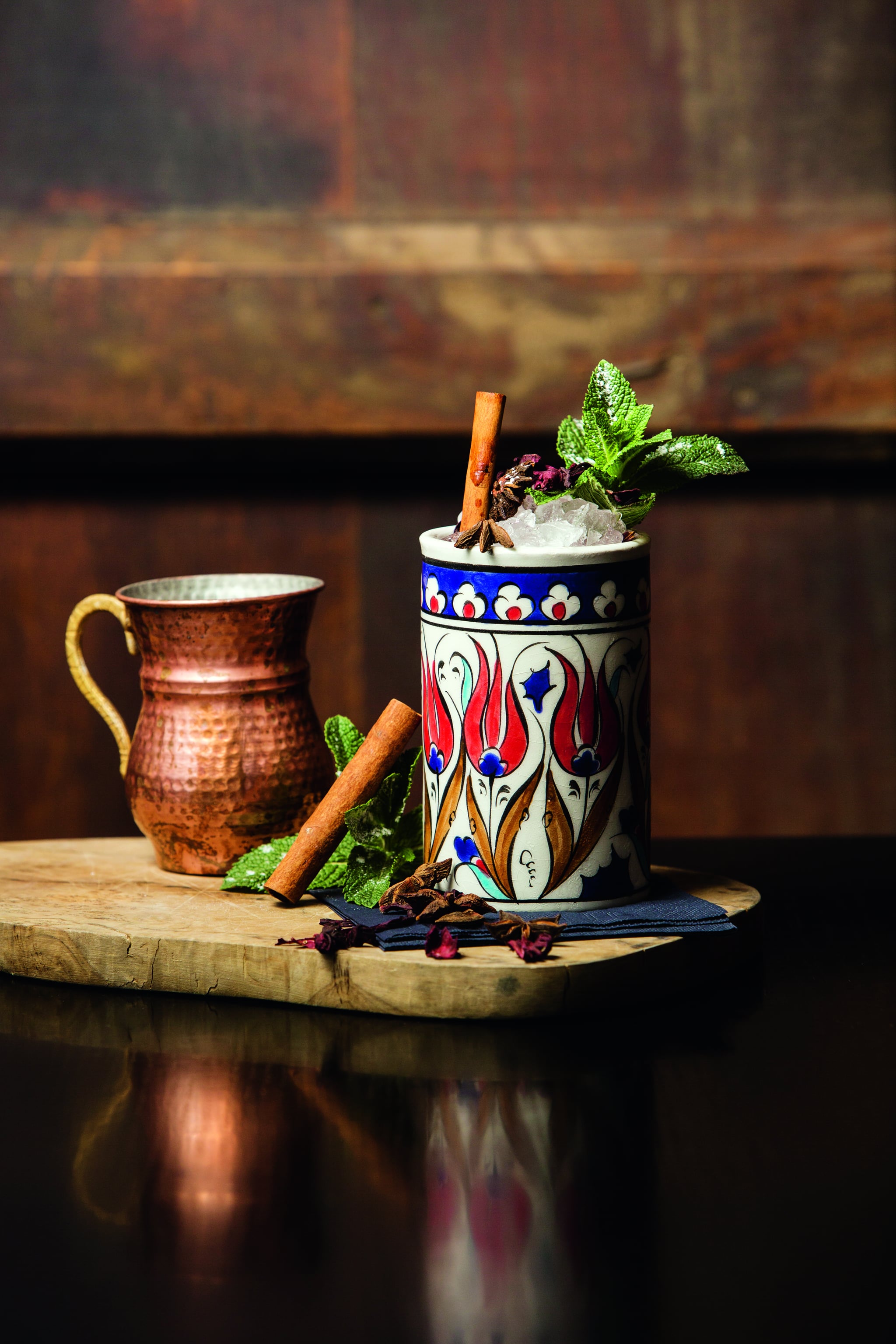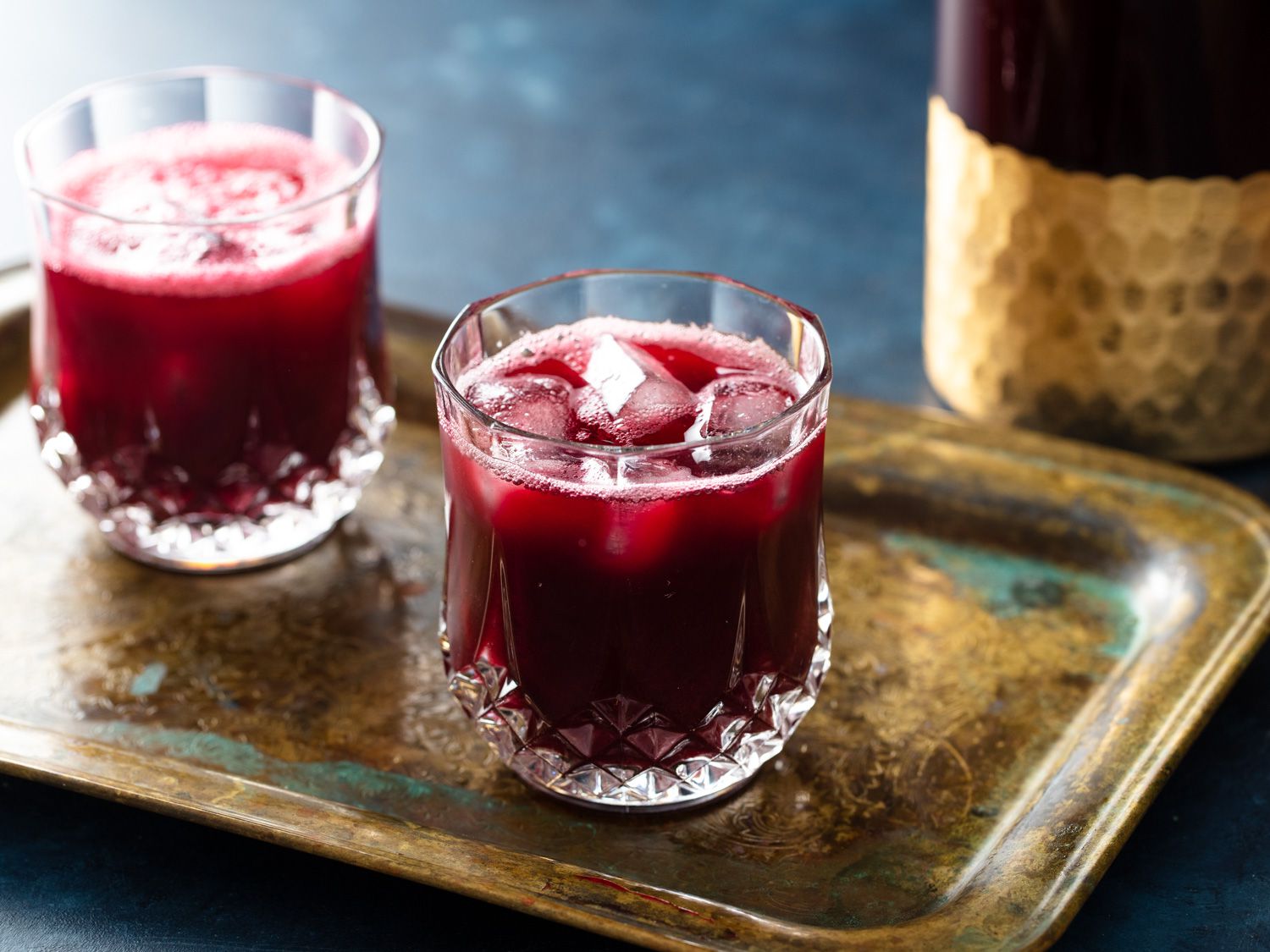/__opt__aboutcom__coeus__resources__content_migration__serious_eats__seriouseats.com__2020__12__20201222-sorrel-jamaican-hibiscus-drink-vicky-wasik-10-3ac5a8f246db4d71899529c788b25667.jpg)
A sail of red colors the oblong tablecloth, and karkade is served in a small, crystal teacup. Ice clicks against the sides, drowns the handful of mint leaves offered with it. The qahwa is busy with a restless Ramadan crowd, but the night is young and the laughter carries into nearby alleyways.
Much like Egypt’s love for traditional black tea and qahwa turki (Turkish coffee), karkade has curated its fair share of fans over the centuries. Karkade, more commonly known as hibiscus tea in English, is recognizable for its deep, pronounced red color, and is often served sweetened or honeyed. Although reports conflict concerning the origin of the herbal tea, it is said to have made appearances in the Ebers Papyrus (1550 BC) as a result of its medicinal properties.
Many have, consequently, argued that karkade’s roots must be far older than the hole-in-the-wall Egyptian coffeehouses it’s served in today. Several non-scholars have taken to calling it the “tea of the pharaohs” due to its constant appearance in Egyptian culture and its presence in antiquity.


Karkade is more of a herbal infusion than it is a real tea. It is made from the calyces of the Hibiscus Sabdariffa flower; the process also includes the drying, soaking, and pressing of petals. It can be served both hot and cold, though the latter is most common. Despite hibiscus variants growing across the globe, karkade is only produced from Hibiscus Sabdariffa, which is found in subtropical regions like that of Egypt, Sudan, and Ethiopia. For that reason, it seems that karkade is something of a regional elixir that has only now been discovered by the world at large.
Due to its health benefits—such as mitigating the effects of high blood pressure, its anti-inflammatory, antiseptic nature, and its lowering of cholesterol—karkade is a remedy that is gaining traction internationally. In fact, the drink has garnered something of an Egyptian reputation abroad, known as the mesir (Egyptian tea) in Indonesia.

Though regardless of the on-paper benefits, Egyptians have created a ritual around the drinking of karkade—the overnight bowls of soaked petals, the marriage of iftar (breaking fast; Ramadan) and a tall glass of cold, freshly brewed karkade, and the hand-sealed tea and spice bags sold in Souq el-Gomaa (Friday market) for those who prefer their tea warm.
Oftentimes, karkade is also used as a substitute for alcoholic beverages in Islamic communities; where one would often pop a champagne bottle, others now pour a ribbon-red glass of karkade to celebrate.
There are few Egyptians out there who have not at least tried karkade—fewer still who do not incorporate it into their diets. From street-sold, bagged karkade, to the iced pitchers found on family dinner tables: karkade is an unmistakable drink, for its color and its culture.







Comments (0)